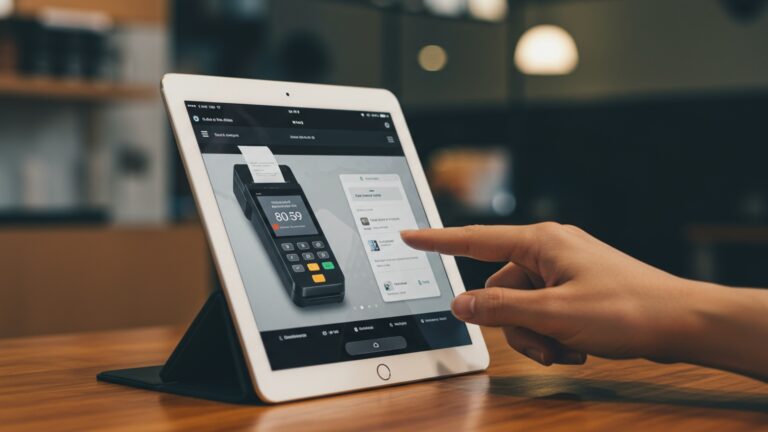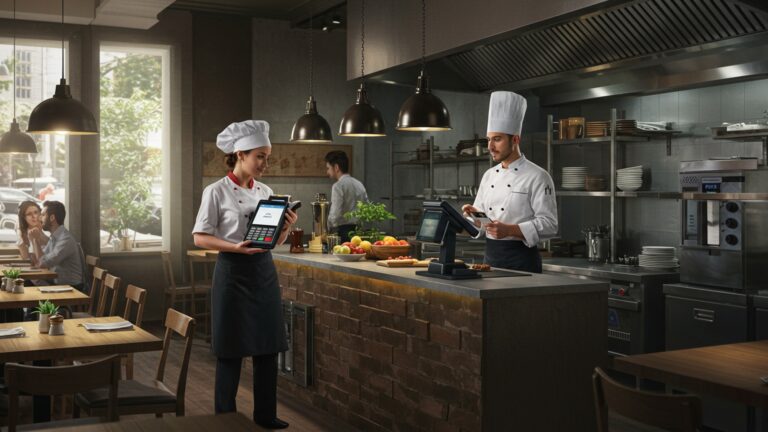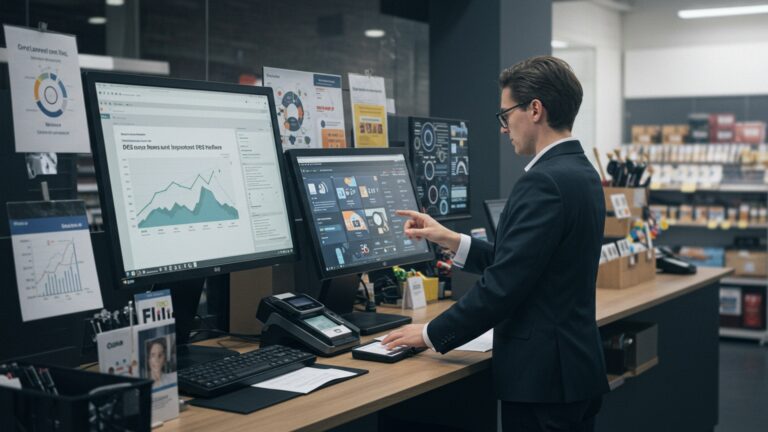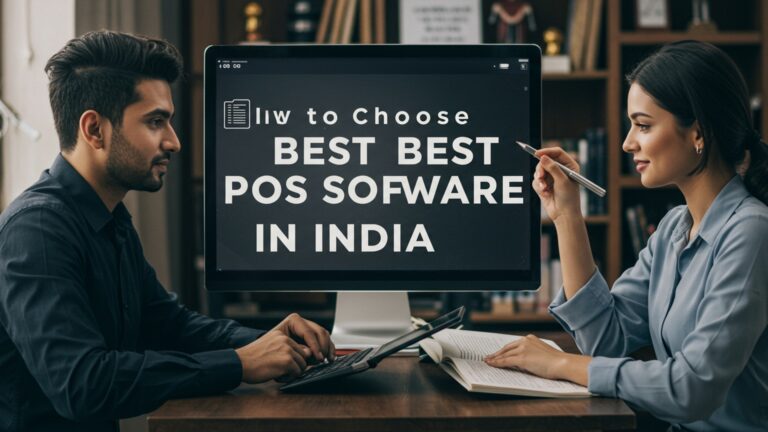Enhance Your Retail Store How to Implement POS Software Effectively
The contemporary retail landscape demands more than simple transactions; it necessitates intelligent operations, seamless omnichannel experiences. real-time data insights to thrive. Many retailers still grapple with inefficient inventory tracking, fragmented customer data. slow checkout processes, directly impacting profitability and customer satisfaction. Effectively implementing advanced pos software for retail offers a strategic imperative, transforming these operational hurdles into significant competitive advantages. Modern systems integrate features like cloud-based analytics, contactless payment processing. comprehensive inventory management, empowering businesses to optimize stock levels, personalize customer interactions. make data-driven decisions that propel growth and cultivate lasting loyalty in an increasingly dynamic market.
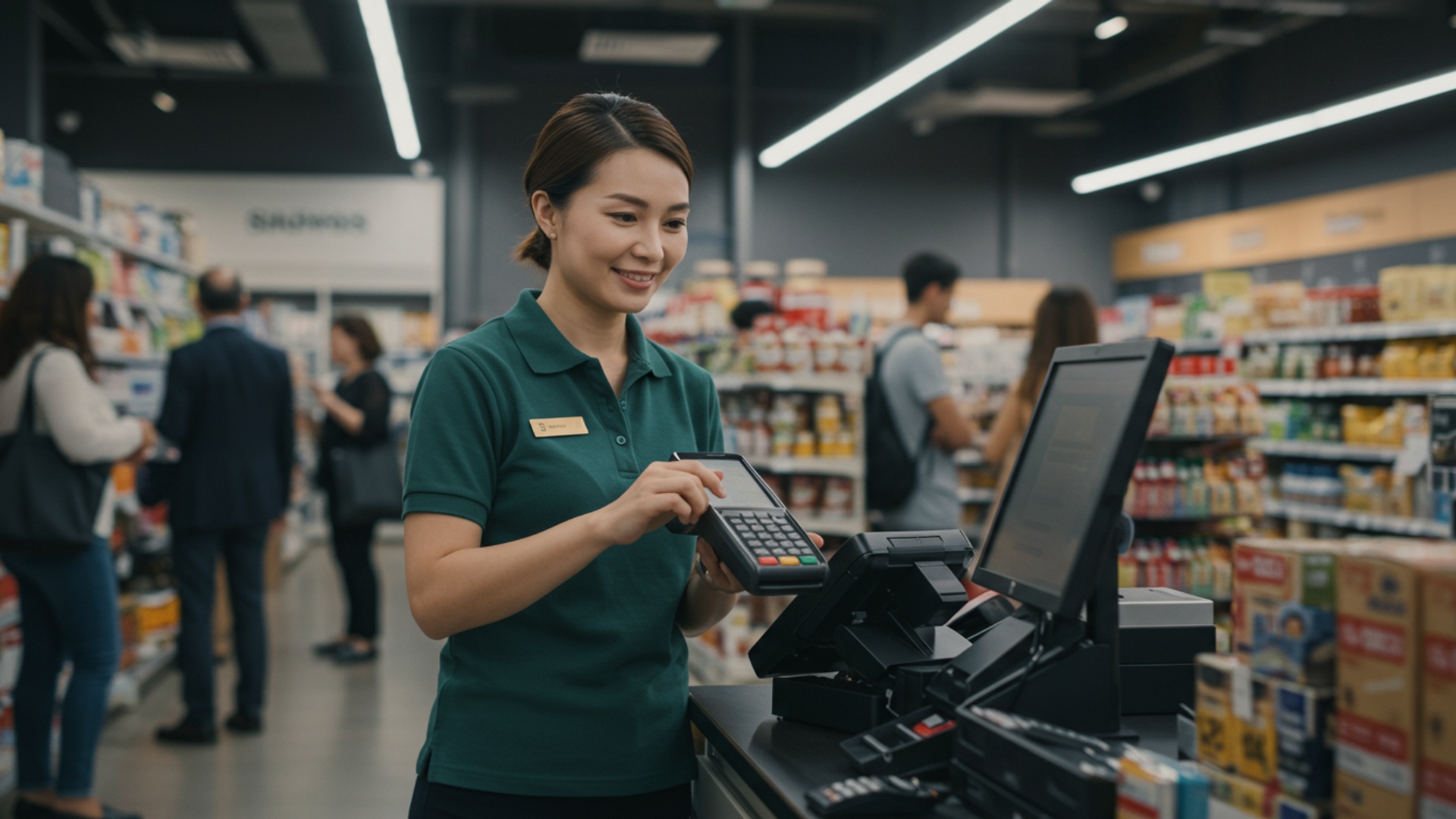
Understanding POS Software for Retail
In the rapidly evolving landscape of modern commerce, a robust Point of Sale (POS) system is no longer just an advantage; it’s a fundamental necessity for any retail business aiming for efficiency and growth. At its core, POS software is the digital hub where all sales transactions are processed. Beyond merely ringing up sales, advanced pos software for retail integrates various critical business functions into a single, cohesive system.
Historically, a POS system might have been a simple cash register. Today, it’s a sophisticated ecosystem comprising hardware (like barcode scanners, receipt printers, cash drawers. card readers) and software that manages everything from sales and inventory to customer relationships and employee performance. For retailers, understanding this comprehensive tool is the first step towards leveraging its full potential.
Key components and functions typically include:
- Transaction Processing
- Inventory Management
- Customer Management
- Reporting & Analytics
- Employee Management
The ability to quickly and accurately process sales, returns. exchanges, accept various payment methods (cash, credit/debit cards, mobile payments). apply discounts or loyalty points.
Tracking stock levels in real-time, managing product variations (sizes, colors), automating reorder points. identifying fast-moving or slow-moving items.
Building customer profiles, tracking purchase history, managing loyalty programs. facilitating targeted marketing efforts.
Generating detailed reports on sales performance, inventory turnover, employee productivity. customer trends, providing actionable insights for strategic decisions.
Managing staff schedules, tracking hours, assigning roles and permissions. monitoring individual sales performance.
The evolution of POS systems has been driven by technological advancements, moving from bulky, on-premise systems to agile, cloud-based solutions accessible from anywhere. This shift has democratized access to powerful retail management tools, making sophisticated pos software for retail available even to small and medium-sized businesses.
Benefits of Implementing POS Software Effectively
Implementing pos software for retail effectively can revolutionize a business, delivering a multitude of benefits that impact every facet of operations. When chosen and deployed strategically, it transforms daily tasks from cumbersome processes into streamlined, data-driven workflows.
- Streamlined Operations
- Improved Customer Experience
- Better Data Insights
- Reduced Errors and Shrinkage
- Enhanced Efficiency and Cost Savings
A primary benefit is the significant reduction in manual tasks. From automated inventory updates to swift transaction processing, POS software minimizes human error and speeds up operations. This means shorter checkout lines, faster stock replenishment. more efficient resource allocation. For example, a busy apparel store using integrated POS software can process a customer return and simultaneously update inventory counts across all sales channels, saving valuable time and preventing stock discrepancies.
Modern POS systems empower staff to deliver superior service. With quick access to customer purchase history, loyalty points. product details, employees can personalize interactions and resolve issues faster. Mobile POS (mPOS) devices allow staff to assist customers and complete sales anywhere on the sales floor, eliminating the need to queue at a traditional counter, enhancing convenience and satisfaction.
One of the most powerful advantages is the ability to collect and review vast amounts of sales data. Effective pos software for retail provides insights into peak sales times, best-selling products, average transaction values. customer demographics. This data is invaluable for making informed decisions about merchandising, staffing, marketing campaigns. pricing strategies. For instance, analyzing sales trends might reveal that a specific product category sells best on weekends, prompting a retailer to increase staffing or run targeted promotions during those periods.
Automating inventory tracking and sales calculations drastically reduces manual errors, which can lead to financial losses. Real-time inventory visibility helps prevent overstocking or understocking, while integrated security features can deter theft and accurately track discrepancies, thereby reducing shrinkage.
By automating routine tasks, employees can focus on higher-value activities like customer engagement or merchandising. Reduced errors mean less time spent on corrections. Moreover, optimized inventory management minimizes carrying costs and reduces waste from expired or obsolete stock. These efficiencies collectively contribute to significant cost savings and improved profitability.
Key Features to Look for in POS Software for Retail
Selecting the right pos software for retail is a critical decision that can significantly impact your business’s operational efficiency and growth trajectory. While many systems offer a wide array of functionalities, certain key features are essential for a robust and future-proof solution.
- Comprehensive Sales Processing
- Multi-Payment Options
- Returns and Exchanges
- Discounts and Promotions
- Offline Mode
- Robust Inventory Management
- Real-time Tracking
- SKU and Variant Management
- Automated Reordering
- Multi-Location Support
- Barcode Scanning
- Customer Relationship Management (CRM)
- Customer Profiles
- Loyalty Programs
- Targeted Marketing
- Detailed Reporting and Analytics
- Sales Reports
- Inventory Reports
- Customer Reports
- Customizable Dashboards
- Employee Management
- Time Clock Functionality
- Role-Based Permissions
- Performance Tracking
- Integration Capabilities
- E-commerce Platforms
- Accounting Software
- Third-Party Apps
- Hardware Compatibility
The ability to accept various payment types, including credit/debit cards, mobile payments (Apple Pay, Google Pay), gift cards, loyalty points. split payments.
Seamless processing of returns, exchanges. store credits, often linked directly to inventory updates.
Easy application of various discounts (percentage, fixed amount), promotional codes. loyalty program rewards.
Crucial for maintaining operations during internet outages, allowing transactions to be processed and synced once connectivity is restored.
Automatic updates of stock levels across all sales channels (in-store, online) with every sale, return, or transfer.
Efficient handling of product variations (size, color, material) and unique Stock Keeping Units.
Setting minimum stock levels to trigger automated purchase orders to suppliers, preventing stockouts.
Centralized management of inventory across multiple store locations or warehouses.
Integration with barcode scanners for quick and accurate product lookup and inventory updates.
Building detailed customer databases with contact insights, purchase history. preferences.
Managing points-based systems, tiered rewards, or member discounts to encourage repeat business.
Utilizing purchase data to segment customers and create personalized marketing campaigns.
Insights into daily, weekly, monthly. yearly sales, broken down by product, category, employee, or time of day.
Data on stock levels, turnover rates, cost of goods sold. potential shrinkage.
Analysis of customer spending habits, loyalty program effectiveness. demographic trends.
The ability to create personalized views of key performance indicators (KPIs) relevant to your business.
Tracking employee work hours for payroll accuracy.
Assigning specific access levels and permissions to different staff roles to maintain security and control.
Monitoring individual sales performance and commission calculations.
Seamless synchronization with online stores (e. g. , Shopify, WooCommerce) to manage inventory and orders across all channels.
Integration with platforms like QuickBooks or Xero to streamline financial record-keeping and reduce manual data entry.
Compatibility with other business tools, such as marketing automation, shipping, or customer support platforms.
Ensure the software supports your existing hardware (or recommended new hardware) like receipt printers, barcode scanners, cash drawers. payment terminals to avoid costly replacements or compatibility issues.
The Implementation Roadmap: A Step-by-Step Guide
Effectively implementing pos software for retail requires a structured approach. Rushing the process or skipping critical steps can lead to inefficiencies, data errors. frustration. Here’s a comprehensive roadmap to guide your implementation.
Phase 1: Planning and Selection
This foundational phase sets the stage for a successful rollout.
- Assessing Needs
Begin by identifying your current operational challenges and desired outcomes. What pain points is your existing system (or lack thereof) creating? Do you need better inventory control, enhanced customer loyalty programs, or more robust reporting? Document these requirements clearly.
// Example of a needs assessment checklist 1. Current Pain Points: - Manual inventory counts leading to discrepancies? - Slow checkout process? - Lack of customer data for marketing? - Difficulty tracking employee performance? 2. Desired Outcomes: - Real-time inventory accuracy. - Faster transaction processing. - Integrated loyalty program. - Comprehensive sales reports.
Determine your budget for both initial setup (software licenses, hardware, data migration) and ongoing costs (monthly subscriptions, support, updates). Remember to factor in potential training costs.
Explore various pos software for retail solutions. Consider factors like scalability, industry-specific features. deployment models (cloud-based vs. on-premise). Look for reputable vendors with proven track records in the retail sector.
Shortlist potential vendors and request detailed demonstrations. During demos, ensure the software addresses your specific needs identified earlier. Ask pointed questions about features, support. integration capabilities. Involve key stakeholders from different departments (sales, inventory, management) in this process.
Once you’ve selected a vendor, carefully review the contract. Pay attention to terms regarding pricing, support level agreements (SLAs), data ownership, upgrade policies. termination clauses.
Phase 2: Data Migration and Setup
This phase involves preparing your business’s insights for the new system.
- Product Data Entry
This is often the most time-consuming step. Accurately input all product details, including SKUs, descriptions, pricing, tax rates, variants (size, color), supplier details. initial stock levels. If you have an existing database, this will involve careful data migration, often requiring data cleansing to remove inconsistencies or duplicates.
// Example data structure for product import (CSV format) SKU,ProductName,Category,Price,Cost,StockLevel,SupplierID,VariantType,VariantValue PNT001,Blue Jeans,Apparel,59. 99,25. 00,100,SUP123,Size,30 PNT002,Blue Jeans,Apparel,59. 99,25. 00,80,SUP123,Size,32 SHRT001,White T-Shirt,Apparel,19. 99,8. 00,150,SUP456,Size,M
Migrate existing customer insights, including contact details, purchase history. loyalty program data. This ensures a seamless transition for your regular customers.
Install and configure all necessary hardware components: POS terminals, barcode scanners, receipt printers, cash drawers. payment terminals. Ensure all devices are correctly connected and communicating with the software.
Verify your internet connectivity and local network infrastructure can support the new POS system, especially if it’s cloud-based. Ensure Wi-Fi is robust for mobile POS devices.
Phase 3: Training and Testing
A well-trained team is crucial for successful adoption.
- Staff Training
- Pilot Testing
- Troubleshooting
Provide comprehensive training for all employees who will interact with the new pos software for retail. This includes front-end staff (cashiers, sales associates) on transaction processing. back-end staff (managers, inventory control) on reporting, inventory management. system administration. Use a combination of group sessions, hands-on practice. detailed user manuals.
Real-world example: “When we first implemented our new POS system at ‘Trendy Threads Boutique,’ we found that a mix of group training and one-on-one sessions, particularly for our senior staff who handled inventory, was most effective. We even created cheat sheets with common transaction types for quick reference during the first few weeks.”
Before going live, conduct thorough pilot testing. Run simulated transactions covering various scenarios: sales, returns, exchanges, discounts, gift card redemptions. different payment methods. Test all hardware components to ensure they function correctly.
Document any issues encountered during testing and work with your vendor to resolve them before launch. This iterative process helps iron out bugs and familiarizes your team with potential solutions.
Phase 4: Go-Live and Post-Implementation
The moment of truth and ongoing optimization.
- Launch Strategy
- Monitoring and Support
- Continuous Optimization
Choose a low-traffic period for your initial launch. Have vendor support staff or key internal trainers on-site during the first few days to provide immediate assistance and address any unexpected issues.
Continuously monitor system performance and gather feedback from staff and customers. Establish clear channels for reporting issues and ensure prompt resolution. Have a support plan in place with your vendor.
POS software is not a set-it-and-forget-it solution. Regularly review reports, examine data. adapt your usage to optimize operations. Leverage new features as they become available and periodically retrain staff as needed.
Cloud-Based vs. On-Premise POS Software: A Comparison
When selecting pos software for retail, one of the fundamental decisions retailers face is whether to opt for a cloud-based solution or an on-premise system. Each model offers distinct advantages and disadvantages. the best choice depends on your specific business needs, budget. technical capabilities.
| Feature | Cloud-Based POS | On-Premise POS |
|---|---|---|
| Deployment | Software hosted on remote servers, accessed via the internet. | Software installed directly on local servers and computers within your store. |
| Cost Structure | Typically subscription-based (monthly/annually). Lower upfront cost. | Higher upfront cost (software license, servers). Potentially lower long-term subscription costs. |
| Accessibility | Accessible from any internet-connected device, anywhere. Ideal for multi-store or remote management. | Limited to local network access. Remote access often requires complex VPN setups. |
| Maintenance & Updates | Managed by the vendor. Automatic updates and backups. Less IT burden. | Managed by the retailer (or third-party IT). Manual updates, patching. backups required. More IT burden. |
| Scalability | Easily scalable; add users or locations as needed with subscription adjustments. | Scalability depends on hardware capacity; often requires significant hardware upgrades. |
| Security | Vendor responsible for security, often with robust measures and compliance (PCI DSS). Relies on internet security. | Retailer responsible for security. Full control over data but requires internal expertise. Vulnerable to local breaches. |
| Offline Capability | Most modern cloud POS systems offer an “offline mode” to continue operations during internet outages, syncing data later. | Fully functional without internet, as all data is local. |
| Customization | Generally less customizable out-of-the-box. often offers integrations via APIs. | Highly customizable, as you own the software and data. Requires developer expertise. |
| Ideal For | Small to medium businesses, multi-location retailers, those seeking flexibility and lower IT overhead. | Large enterprises with specific customization needs, robust in-house IT. a desire for full control. |
Real-World Applications and Best Practices
The theoretical benefits of pos software for retail become truly impactful when applied in real-world scenarios. Through specific use cases and adherence to best practices, retailers can unlock significant value.
Case Study: ‘The Artisan’s Nook’ – Improving Inventory Accuracy
The Artisan’s Nook, a small boutique selling handmade jewelry and local crafts, struggled with inventory management. Manual tracking led to frequent stockouts of popular items and overstocking of slow-moving ones. After implementing cloud-based pos software for retail, they integrated their in-store sales with their small e-commerce site. The software provided:
- Real-time Inventory Sync
- Automated Reorder Alerts
- Sales Analytics
Every sale, whether online or in-store, automatically updated stock levels. This eliminated overselling and reduced customer disappointment.
The system was configured to alert the owner when an item’s stock fell below a set threshold, prompting timely reorders from artisans.
Reports highlighted which craft categories were most popular during different seasons, allowing the owner to make data-driven purchasing decisions.
Within six months, stockouts decreased by 40%. inventory carrying costs were reduced by 15%, significantly improving profitability and customer satisfaction.
Case Study: ‘Global Grocers’ – Centralizing Data for a Multi-Store Chain
Global Grocers, a regional chain of five grocery stores, faced challenges with inconsistent pricing, disparate inventory data. difficulty in analyzing overall chain performance. Their legacy POS systems at each location operated independently. They transitioned to an enterprise-level, centralized pos software for retail solution.
- Centralized Product Catalog
- Unified Inventory View
- Consolidated Reporting
All product insights, including pricing and promotions, could be managed from a single administrative interface and pushed out to all stores simultaneously, ensuring consistency.
Managers could view stock levels across all five locations, facilitating inter-store transfers to balance inventory and minimize waste.
The head office gained access to real-time sales, profitability. customer data aggregated from all stores, enabling comprehensive performance analysis and strategic planning for the entire chain.
This implementation led to uniform customer experience across all stores, better purchasing power due to aggregated data. the ability to roll out chain-wide promotions effectively.
Actionable Tips for Successful Implementation:
- Invest in Quality Training
- Data Cleanliness is Key
- Phased Rollout
- Regular Backups
- Leverage Vendor Support
- Security Protocols
Don’t underestimate the importance of thorough staff training. Well-trained employees are more efficient and less likely to make errors.
Before migrating data, ensure it is accurate, consistent. free of duplicates. “Garbage in, garbage out” applies strongly here.
For larger businesses, consider a phased rollout (e. g. , one department or one store at a time) to identify and resolve issues before a full launch.
Even with cloud POS, interpret your backup schedule and consider local backups for critical data if possible, especially during the initial migration.
Utilize the training and support resources provided by your POS vendor. They are experts in their product.
Implement strong password policies, restrict access based on roles. ensure your network is secure to protect sensitive customer and sales data. Adhere to PCI DSS compliance standards for payment processing.
Overcoming Common Implementation Challenges
While the benefits of effective pos software for retail are substantial, the implementation process is not without its hurdles. Anticipating and addressing these common challenges proactively can significantly increase your chances of a smooth transition.
- Resistance to Change
- Solution
- Data Migration Hurdles
- Solution
- Technical Issues and Integrations
- Solution
- Vendor Support and Training Gaps
- Solution
- Underestimating the Time and Resources Required
- Solution
This is perhaps the most human of all challenges. Employees, especially those accustomed to older systems or manual processes, may be resistant to learning new software. Fear of the unknown, perceived complexity, or job security concerns can lead to pushback.
Involve staff early in the selection process. Clearly communicate the “why” behind the change – how it benefits them (e. g. , easier tasks, less manual work) and the business. Provide ample, hands-on training tailored to different roles. Emphasize that the software is a tool to enhance, not replace, their value. Designate “super-users” or “champions” among staff who can assist peers and foster a positive attitude towards the new system.
Transferring existing product, customer. historical sales data from old systems or spreadsheets to the new POS can be complex. Inaccurate, incomplete, or inconsistently formatted data can lead to errors in the new system.
Prioritize data cleansing before migration. Dedicate sufficient time and resources to standardize data formats, remove duplicates. fill in missing details. Work closely with your vendor to interpret their data import requirements and leverage any provided migration tools. Consider a partial migration initially for critical data, then add less critical data later.
Unexpected technical glitches, hardware compatibility problems, or difficulties integrating the POS with other existing systems (e-commerce, accounting) can delay the rollout and disrupt operations.
Thoroughly test all hardware and software components during the pilot phase. Ensure your network infrastructure (Wi-Fi, internet speed) is robust enough. Confirm all necessary integrations are supported by the chosen pos software for retail and perform integration tests early. Have a dedicated IT resource or vendor support on standby during the go-live period. Always have a contingency plan, such as manual override procedures or backup payment methods, in case of system failures.
Sometimes, the support or training provided by the POS vendor may not meet expectations, leaving your team unprepared or unsupported post-implementation.
Clarify support SLAs and training offerings during contract negotiation. Look for vendors with a strong reputation for customer service. Request references and speak to other retailers using their system. Supplement vendor training with internal training materials and ongoing refresher courses. Establish a clear internal point of contact for all POS-related queries.
Retailers often underestimate the time, effort. personnel required to successfully implement and adopt new pos software for retail, leading to rushed decisions and incomplete planning.
Create a realistic project plan with clear timelines and assigned responsibilities. Allocate a dedicated project manager or team. Factor in buffer time for unexpected delays. grasp that implementation is not a one-time event but an ongoing process of optimization and adaptation.
Future Trends in POS Software for Retail
The landscape of pos software for retail is continually evolving, driven by advancements in technology and changing consumer expectations. Staying abreast of these trends is crucial for retailers looking to maintain a competitive edge and future-proof their operations.
- AI and Machine Learning Integration
- Mobile POS (mPOS) and Tablet-Based Systems
- Enhanced Personalization and Customer Loyalty
- Omnichannel Retailing and Unified Commerce
- Contactless Payments and Biometrics
- Self-Checkout and Automated Stores
Artificial intelligence and machine learning are poised to revolutionize POS systems by providing deeper insights and automation. AI can assess vast amounts of sales data to predict purchasing trends, optimize inventory levels more precisely. suggest personalized product recommendations to customers in real-time. For instance, an AI-powered POS could alert a store manager to an impending stockout of a high-demand item days in advance or identify opportunities for cross-selling based on customer purchase history.
The shift towards greater mobility is accelerating. mPOS solutions, running on tablets or smartphones, offer unparalleled flexibility. Sales associates can complete transactions, look up inventory. assist customers anywhere on the sales floor, reducing checkout lines and enhancing the personalized shopping experience. This trend supports pop-up shops, outdoor markets. a more dynamic retail environment.
Future pos software for retail will go beyond basic loyalty points. It will leverage AI and CRM data to offer highly personalized experiences, from tailored promotions based on individual preferences to seamless recognition of loyal customers across online and offline channels. Imagine a system that greets a returning customer by name, suggests items based on their past purchases. applies their personalized discount automatically.
The distinction between online and in-store shopping continues to blur. Future POS systems will be central to a truly unified commerce strategy, providing a single view of inventory, customer data. sales across all touchpoints. This enables seamless “buy online, pick up in store” (BOPIS) options, in-store returns for online purchases. consistent customer experiences regardless of how or where they interact with your brand.
The adoption of contactless payment methods (NFC, QR codes) is expanding rapidly. Future POS systems will further integrate these, alongside emerging biometric payment options (e. g. , fingerprint, facial recognition), offering faster, more secure. more convenient checkout experiences. This reduces friction and enhances security for both customers and retailers.
While not for every retailer, advancements in computer vision and RFID technology are enabling more sophisticated self-checkout options and even fully automated, cashier-less stores. POS software will be the backbone of these systems, handling automatic item recognition, payment processing. inventory updates with minimal human intervention.
Conclusion
Implementing POS software effectively is less about the installation and more about the strategic integration into your daily operations. From my own experience, I’ve seen small retail shops, much like a local artisan bakery I advised, transform their chaotic morning rush into a smooth, customer-centric experience simply by leveraging real-time inventory updates and quick payment processing. This isn’t just about ringing up sales; it’s about unlocking invaluable data that informs everything from reordering popular items to optimizing staff schedules. Embrace the current trend of cloud-based systems, which offer unparalleled flexibility and remote access, a game-changer for monitoring sales even when you’re off-site, a recent development that has truly empowered small business owners. Your actionable step now is to actively involve your team in the transition, ensuring they comprehend the “why” behind each feature, not just the “how.” Remember, a well-implemented POS system, like mastering a new skill, requires practice and adaptation. it ultimately empowers you to pivot faster, personalize customer interactions. truly elevate your retail store. Don’t just install it; master it. watch your business thrive with renewed efficiency and insight.
More Articles
7 Essential Steps How to Implement Retail POS Software Seamlessly
Learn How Cloud Based POS Software Boosts Business Efficiency
Discover How to Optimize Your Business with Smart POS Billing Software
A Comprehensive Guide to Mastering Essential POS Software Features
FAQs
Why should my retail store even consider getting POS software?
It’s a total game-changer! A good POS system streamlines everything from ringing up sales to tracking inventory, saving you tons of time and reducing errors. It also gives you valuable insights into what’s selling, helping you make smarter business decisions and ultimately boost your bottom line. Think faster checkouts, happier customers. less paperwork.
How do I choose the best POS system for my specific store?
Don’t just pick the cheapest! Think about what your store really needs. Do you sell clothes, food, or electronics? Look for features like robust inventory management, customer loyalty programs, detailed reporting tools. overall ease of use. Cloud-based systems are often great for flexibility. Also, consider your budget and read reviews from other retailers in your niche.
Okay, I’ve picked one. What’s the actual process of getting it up and running?
First, you’ll need to set up any necessary hardware (like card readers, receipt printers, barcode scanners). Then comes the software installation and configuration – that’s where you input all your products, prices. store-specific settings. Data migration (moving your old info) is a big step. finally, thorough training for your team is absolutely crucial. It sounds like a lot. most providers offer guided setup.
Will my staff struggle to learn how to use this new system?
Not if you approach it right! Most modern POS systems are designed to be pretty intuitive and user-friendly. The key is proper training. Don’t just show them once; provide hands-on practice, quick-reference guides. be available for questions during the initial rollout. A well-trained team will adopt it faster and make fewer mistakes, making your life much easier.
What about all my old sales and inventory data? Can I move it over?
Absolutely, data migration is a critical step! Most POS systems allow you to import existing product lists, customer databases. even some past sales history. This usually involves exporting your current data into a compatible format (like a CSV file) and then importing it into the new system. It might require some cleanup. it’s totally worth it for continuity and historical insights.
How can a POS system really help me manage my inventory better?
It’s fantastic for inventory! A good POS tracks every sale, automatically updating your stock levels in real-time. This means you know exactly what you have, what’s selling fast. what’s gathering dust. It can even alert you when items are low, helping you reorder smarter, avoid frustrating stockouts. reduce overstocking, which ultimately saves you money and space.
After it’s live, what kind of ongoing support should I expect?
Good support is non-negotiable! Look for providers that offer responsive customer service, whether it’s through phone, email, or chat. You’ll want access to technical assistance for troubleshooting, regular updates for new features and security patches. possibly even online resources or a user community. Make sure their support hours align with your store’s operating hours.

